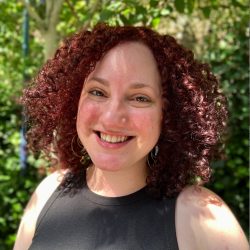
If you’re reading this, it’s a safe bet that you know a child or teen who has been diagnosed with Asperger’s syndrome and you probably have a lot of questions about what that means. You may also be wondering how your child’s therapist, psychologist, and/or mental health worker came to that diagnosis. This tip will help you understand the diagnostic criteria used to diagnose Asperger’s syndrome and learn some basic information on treatment options. Asperger’s Syndrome is considered to be a “high functioning” version of a Pervasive Developmental Disorder (PDD). Pervasive Developmental Disorders are a range or “spectrum” of disorders that are characterized by severe and pervasive impairment in developmental functions such as social interaction, communication skills, and presence of stereotyped movements or behaviors. The spectrum of PDD includes Autism, Asperser’s Disorder, Rett’s disorder, and Childhood Disintegrative Disorder. PDD symptoms are usually noticed early in childhood, when developmental milestones are not reached.
PDDs are a group of complex disorders of brain development, which are diagnosed by psychiatrists, pediatricians, psychologists, and/or therapists. These professionals use a guidebook called the DSM-IV-TR (Diagnostic and Statistical Manual of Mental Disorders version 4), which is published by the American Psychiatric Association and covers all categories of mental health disorders for both adults and children. The categories of symptoms for each diagnosis in the DSM-IV-TR have been studied and tested statistically to determine typical ages, behaviors, and symptoms associated with certain disorders, and effectiveness of treatment for each disorder (DSM–IV–TR (2000) 4th ed., text rev.). Please note that in the next year or so, the DSM-V will be published and it is rumored that the diagnostic criteria for PDD will change greatly. As of now, the DSM-IV-TR (2000) requires that individuals need to meet the following criteria in order to be diagnosed with Asperger’s Syndrome. A child will need to meet 6 or more of the following criteria to receive a diagnosis of Asperger’s Syndrome.
Criteria A states: Qualitative impairment in social interaction, as manifested by at least two of the following: (1) marked impairment in the use of multiple nonverbal behaviors such as eye-to-eye gaze, facial expression, body postures, and gestures to regulate social interaction, (2) failure to develop peer relationships appropriate to developmental level, (3) a lack of spontaneous seeking to share enjoyment, interests, or achievements with other people (e.g., by a lack of showing, bringing, or pointing out objects of interest to other people), or (4) lack of social or emotional reciprocity (DSM–IV–TR (2000) 4th ed., text rev.).
Some common behaviors that are seen in children with Asperger’s to meet this criteria include: limited social interaction meaning the child has few friends, not meeting eye contact or a lack of other non-verbal communication skills, average to highly advanced verbal language skills such as reading comprehension and vocabulary, tendency to talk primarily about oneself not others, literal interpretation of directions and phrases, and lack of showing or bringing objects and emotional content to the attention of others. Children with Asperger’s Syndrome will test between average and very high for verbal ability yet in practice, they will seem awkward and as if they lack these communication skills. This is the primary deficit used to make a diagnosis.
Criteria B states: Restricted repetitive and stereotyped patterns of behavior, interests, and activities, as manifested by at least one of the following: (1) encompassing preoccupation with one or more stereotyped and restricted patterns of interest that is abnormal either in intensity or focus, (2) apparently inflexible adherence to specific, nonfunctional routines or rituals, (3) stereotyped and repetitive motor mannerisms (e.g., hand or finger flapping or twisting, or complex whole-body movements), or (4) persistent preoccupation with parts of objects (DSM–IV–TR (2000) 4th ed., text rev.). Some of the behaviors used to assess if a child meets this criteria include: an obsession with very specific and often unusual topics like bugs, sky scrapers, or highlighters, children will often need to follow specific rules or rituals throughout their day such as opening and closing a book back 3 times before taking anything out, lastly they may display awkward movements and mannerisms like flapping their hands when they get excited.
Criteria C states: The disturbance causes clinically significant impairment in social, occupational, or other important areas of functioning. This means that the child or his or her family are experience difficulty in their day to day functioning as a result of the delay in social interaction and other associated behaviors. Criteria D says: There is no clinically significant general delay in language (e.g., single words used by age 2 years, communicative phrases used by age 3 years). This means that children diagnosed with Asperger’s are still able to use their words. They have acquired language development, they just have a delay and difficulty using it in spontaneous conversation. Criteria E maintains: There is no clinically significant delay in cognitive development or in the development of age-appropriate self-help skills, adaptive behavior (other than in social interaction), and curiosity about the environment in childhood. This means that children with Asperger’s will still develop typically in other areas and life skills. They will be able to learn toilet training, coloring, and fine motor skills. Communication and social interaction are the primary deficits for Asperger’s. Lastly Criteria F states: Criteria are not met for another specific Pervasive Developmental Disorder or Schizophrenia (DSM–IV–TR (2000) 4th ed., text rev). This criteria rules out other diagnoses which may look similar to Asperger’s
Children diagnosed with Asperger’s Syndrome are very bright, lovable children, however, school can be difficult for them at times due to the delays they experience with social interaction. Children with Asperger’s may become over stimulated when in stressful social situations and they may have “tantrums” or outbursts of the inappropriate behaviors they use for self-stimulation or soothing. Developing and maintaining friendships can be hard because of the social delays and highly specialized interested children with Asperger’s often have. Due to these delays, other children may reject a child diagnosed with Asperger’s. Some children who are not on the spectrum will reach out to children with Asperger’s but may easily become frustrated when they come across as awkward, display emotion at socially inappropriate times, or simply “doesn’t get it.” In the rare school system that does not promote inclusion and acceptance, children with Asperger’s may find themselves isolated or excluded from activities. Any one or a combination of these behavioral challenges can be a reference point for an assessment to determine if your child or a child you know meets criteria for Asperger’s Syndrome. Getting an assessment and diagnosis made early on is best because appropriate social behavior can be learned! Having a proper diagnosis will help the professional working with your child treat their specialized delays better.
After a diagnosis is made, treatment options include: individual or family based therapy including: cognitive behavioral therapy, social skills development education and groups, use of social stories, educational supports such as a one-on-one aide, IEP or emotional support, occupational and physical therapy, and standard behavioral therapies for PDD (ABA, floortime, etc) are also good additions. Experts believe and research show that the earlier treatment options are made available and used by families, the better the outcome for children with Asperger’s Syndrome. With social skills instruction and behavior modification, children with Asperger’s can learn appropriate socialization skills and grow to develop healthy multi-faceted relationships. If you would like an assessment or therapy for your child or teenage with Asperger’s syndrome please contact us at The Center For Growth / Therapy in Philadelphia. 267 324 9564.



















